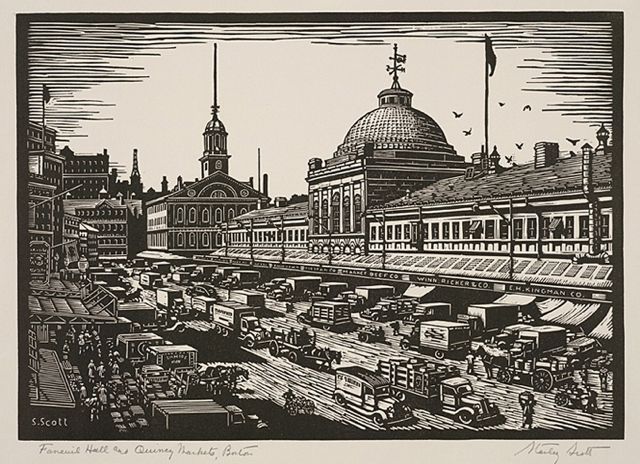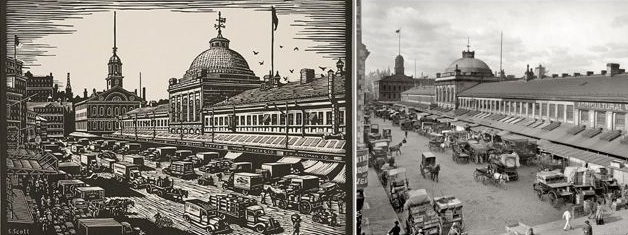Activity Guide: In a group of 3-4 people, read the following questions as you look at the knowledge print. Informally answer the questions aloud, discussing each question as a group. The purpose of these questions is to involve you in what is going on in each section of the picture.
- (Online) This is a linocut print depicting a Boston market place in the 1930s. With this technique, the artist etches into linoleum with a sharp instrument. This media tends to limit fine detail favoring lines, shading, and wide curves. Using a magnifying glass, examine various quadrants of the print.
- Verbalize or record evidence proving the artist successfully communicated the scene to us:
- List the sights and sounds might we be hearing if we placed ourselves in the picture.
- Itemize evidence suggesting that we have entered a business rather than a social environment.
- Though congested, list evidence of a sense of order exists on this street.
- List types of transportation vehicles that give clues to the jobs of the 1930s.
- List specific clues, if any, placing us in the 1930s.
- Quincy Market is the domed structure at the center right of the print. Compare the architecture of it and Faneuil Hall, the building at center left by listing common architectural building features used on both of them.
- Observing the signage, list the names of business establishments serving the people in the 1930s. Research the business establishments existing in the 1930 census.
- Research the architecture of 18th century Faneuil Hall and Quincy Market noting the inclusion of the weathervanes, cupola, dome, pillars, arches, cornices, pediments, columns.
- Scan a 1930 Census of the Faneuil Hall Market area in Boston. What types of laborers were employed at that time working in Quincy Market?

